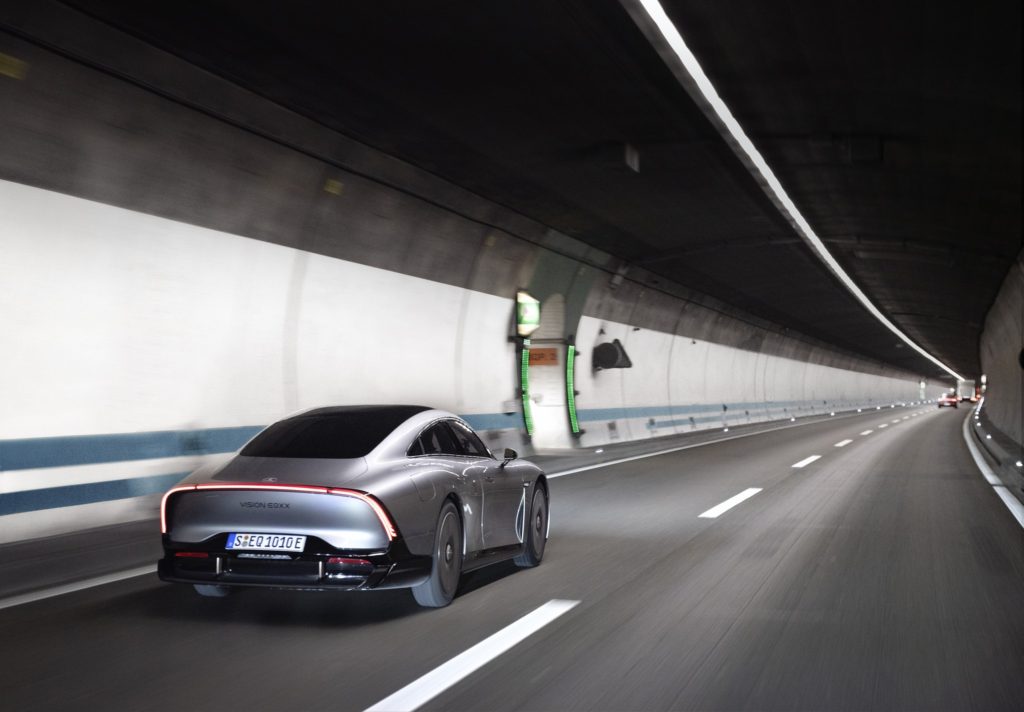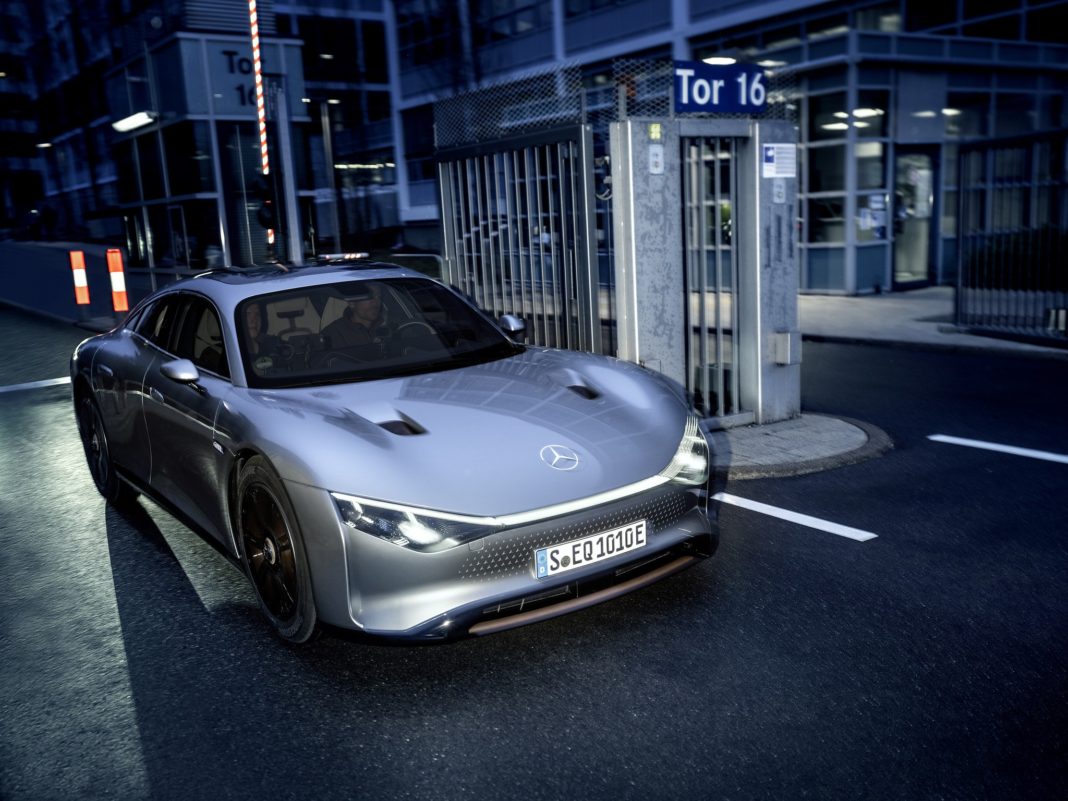That’s over 626 miles. One of the longest distances traveled by an EV on a single charge. Most electric vehicles on the market today have a range that falls between 200 and 300 miles, while some earlier models have less than that.
When Mercedes unveiled the Vision EQXX in January, claiming that it could travel 1,000 kilometres on a single charge, we took it as a theory, a promise for the distant future, and we stressed that it was only a concept. Now Mercedes has spoken again. With a working prototype, the promised 1,000 kilometres have indeed been covered and there is still 15% of energy left in the battery, which would be enough for another 140 kilometres (87 miles).
The Vision EQXX travelled on a single charge from Sindelfingen in southern Germany through the Swiss Alps and northern Italy to Cassis on the Côte d’Azur in France.
This was no eco-drive, with the car crawling and holding up traffic. The average speed was 87.4 km/h, including a long drive at speeds of up to 140 kmh (70 mph) in the fast lane on a German motorway, and in a variety of weather conditions, including cold and rainy weather.
“With our successful road trip to the South of France, we’ve shown that efficiency is the new currency. And this success also clearly speaks for our new collaborative development process, incorporating many learnings from the Mercedes-AMG F1 team and its cutting-edge expertise in electric powertrains. The VISION EQXX is the result of a comprehensive programme that provides a blueprint for the future of automotive engineering. Many of the innovative developments are already being integrated into production, some of them in the next generation of modular architecture for compact and midsize Mercedes‑Benz vehicles. And the journey continues. With the VISION EQXX, we will keep testing the limits of what’s possible,” says Markus Schäfer, Member of the Board of Management of Mercedes-Benz Group AG, Chief Technology Officer responsible for Development and Purchasing.
The carmaker says the average consumption of the car was “record low – 8.7 kWh per 100 kilometres”. The drive was completed with the charging socket sealed and accompanied by an independent expert from the certification body TÜV Süd.
Behind the great success are many small details
A futuristic concept focusing on aerodynamics and battery efficiency, the Vision EQXX was announced in January 2022. Its undeniably good range is to be further enhanced by roof-mounted solar panels that can add up to 24 kilometres.
In a post on Mercedes blog, the company shared some details on how it achieved this result. For example, at highway speeds, the car’s extremely low air drag coefficient – just 0.17 – as well as specially developed Bridgestone tires helped.

Efficient thermal management system – passive powertrain cooling is all it takes
Since the electric drivetrain generates little waste heat thanks to its high efficiency, passive cooling is sufficient throughout the journey. The cooling plate in the underbody uses the airflow to ensure even cooling. This aerodynamically highly efficient solution increases the range by 20 kilometres, while the cd value remains unchanged at a low 0.17.
The lightweight design of the car, which weighs (for an electric car) just 1,755 kilograms (3,869 pounds), helped save energy when tackling the Swiss mountains. The braking, which recuperated some of the energy back into the batteries, and the solar roof also played their part in the final result.
he EQXX also benefited significantly from its bespoke Bridgestone tires, with their extremely low rolling resistance rating of 4.7. Co-developed with Mercedes Benz, the Japanese tire maker created a unique 185/65 R 20 97 T Turanza eco tire boasting large diameter and narrow tread that helps the car to slice through the air and generate the record-breaking range.
VISION EQXX: the trip log in figures
| Start | Sindelfingen, April 5th, 2022, 7:00 a.m. |
| Arrival | Cassis, April 5th, 2022, 7:02 p.m. |
| Travel route | Sindelfingen, Gotthard Tunnel, Milan, Cassis |
| Driving distance | 1,008 kilometres |
| Total travel time/movement | 12 hours and 2 minutes/11 hours and 32 minutes |
| Average speed | 87.4 km/h |
| Maximum speed on motorway | 140 km/h |
| Average consumption | 8.7 kWh per 100 km |
| Battery charge level on arrival (SoC) | around 15% |
| Remaining range on arrival | around 140 km |
Sources: just-auto.com, group-media.mercedes-benz.com, forbes.com
